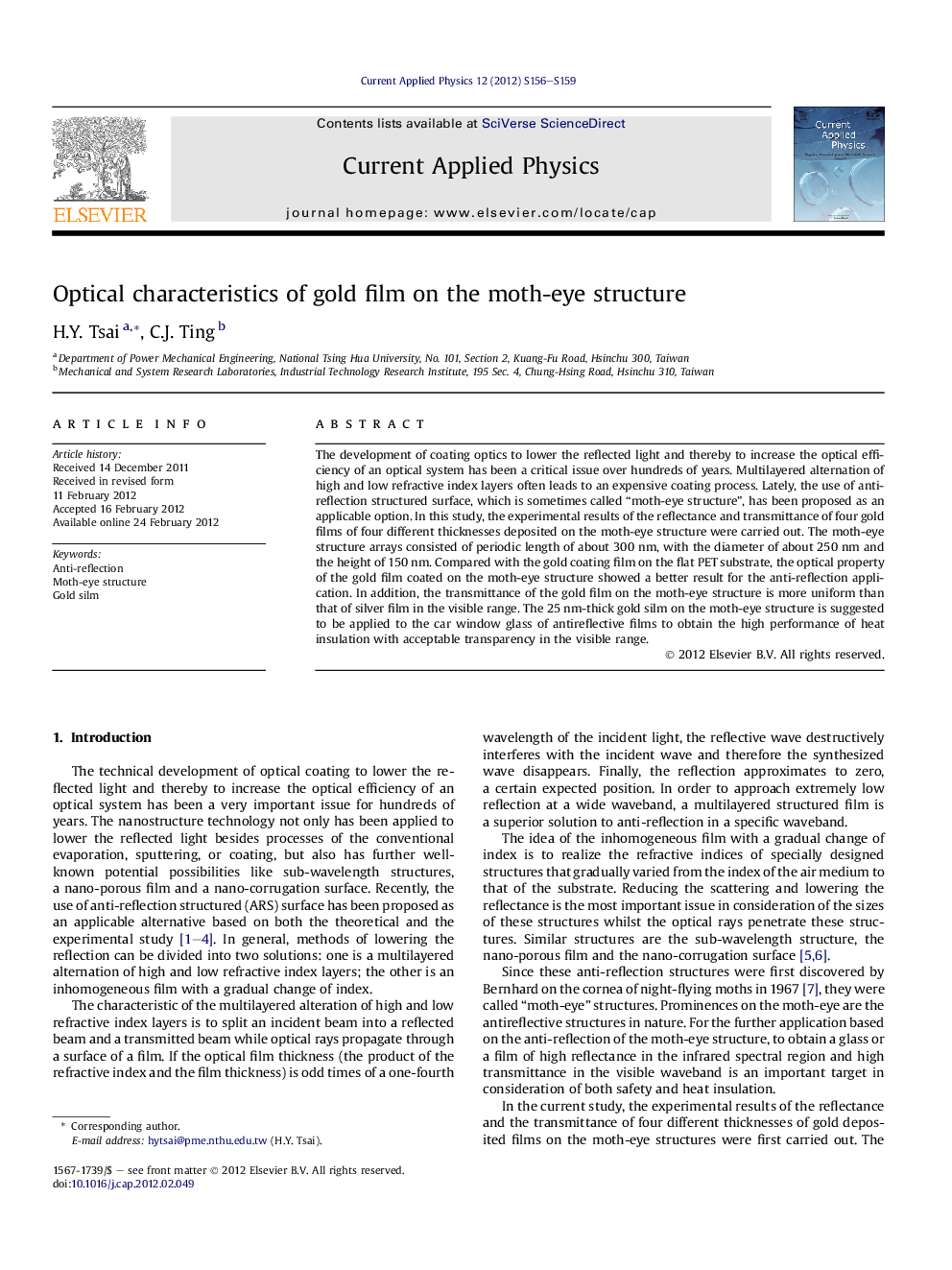| Article ID | Journal | Published Year | Pages | File Type |
|---|---|---|---|---|
| 1787217 | Current Applied Physics | 2012 | 4 Pages |
The development of coating optics to lower the reflected light and thereby to increase the optical efficiency of an optical system has been a critical issue over hundreds of years. Multilayered alternation of high and low refractive index layers often leads to an expensive coating process. Lately, the use of anti-reflection structured surface, which is sometimes called “moth-eye structure”, has been proposed as an applicable option. In this study, the experimental results of the reflectance and transmittance of four gold films of four different thicknesses deposited on the moth-eye structure were carried out. The moth-eye structure arrays consisted of periodic length of about 300 nm, with the diameter of about 250 nm and the height of 150 nm. Compared with the gold coating film on the flat PET substrate, the optical property of the gold film coated on the moth-eye structure showed a better result for the anti-reflection application. In addition, the transmittance of the gold film on the moth-eye structure is more uniform than that of silver film in the visible range. The 25 nm-thick gold silm on the moth-eye structure is suggested to be applied to the car window glass of antireflective films to obtain the high performance of heat insulation with acceptable transparency in the visible range.
